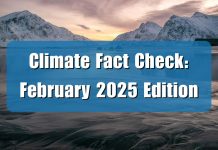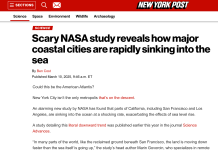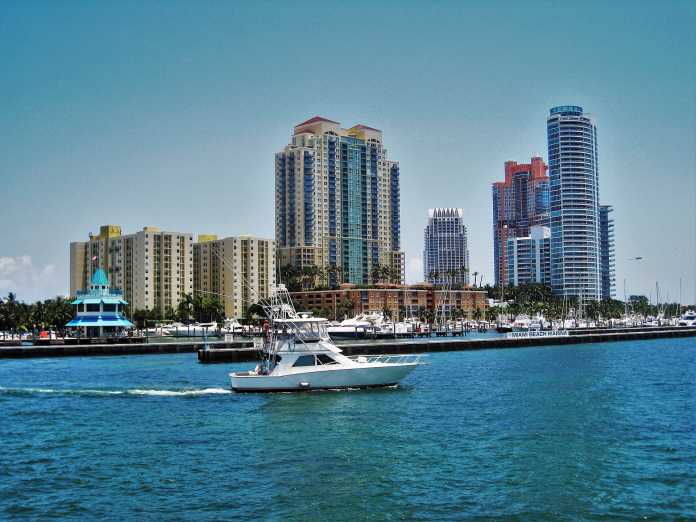Google News today is promoting a misleading article by the The Guardian titled, “Weather disasters cost $150bn in 2020, revealing impact of climate change – report.” The article falsely links the high costs of natural disasters in 2020 to purported human-caused climate change. In reality, evidence shows any higher loses were due to increasing numbers of people moving to and building expensive property in areas historically prone to natural disasters, not climate change. Indeed, long-term data indicates there has been no increase in the number or severity of natural disasters in recent decades. Also, 2020 was not unusual historically.
Referencing a study from the group Christian Aid, The Guardian writes, “From Australian bushfires to Atlantic hurricanes, insurance damages were the highest annual total ever. The world’s 10 costliest weather disasters of 2020 saw insured damages worth $150bn, topping the figure for 2019 and reflecting a long-term impact of global warming.”
Regarding wildfires, long-term data show the number of wildfires and acreage consumed by wildfires has declined dramatically over the past century. Indeed, the Copernicus Atmosphere Monitoring Service reports, “2020 was one of the lowest years for active fires globally.”
Indeed, in his book False Alarm, Bjorn Lomborg observes:
“There is plenty of evidence for a reduction in the level of devastation caused by fire, with satellites showing a 25 percent reduction globally in burned area just over the past 18 years … In total, the global amount of area burned as declined by more than 540,000 square miles, from 1.9 million square miles in the early part of last century to 1.4 million square miles today.”
Indeed, NASA recently reported that its satellite measurements show wildfires globally declined by 24 percent since 1998.
Wildfires have declined sharply over the course of the past century in the United States, as well. As reported in Climate at a Glance: Wildfires, long-term data from the U.S. National Interagency Fire Center (NIFC) show wildfires have declined in number and severity since the early 1900s. Assessing data on U.S. wildfires from as far back as 1926, NIFC reports the numbers of acres burned is far less now than it was throughout the early 20th century, with the current acres burned running just 1/4th to 1/5th of the amount of land that typically burned in the 1930s.
The data on hurricanes is equally clear. The United Nations Intergovernmental Panel on Climate Change reports there is, “only low confidence for the attribution of any detectable changes in tropical cyclone activity to anthropogenic influences.” And data from the National Hurricane Center (NHC), reported in Climate at a Glance: Hurricanes, details that in the United States, hurricane impacts have in recent years been at an all-time low.
“The United States recently went more than a decade (2005 through 2017) without a major hurricane measuring Category 3 or higher, which is the longest such period in recorded history. The United States also recently experienced the fewest number of hurricane strikes in any eight-year period (2009 through 2017) in recorded history,” notes Climate at a Glance: Hurricanes.
The Christian Aid study referenced by The Guardian focuses on the possibly record breaking costs of 2020’s weather-related natural disasters. But in doing so, it ignores what Bjorn Lomborg in his book False Alarm refers to as the “expanding bulls-eye effect.” The increased costs of natural disasters in recent decades are due to communities increasingly expanding into areas historically prone to natural disasters, such as flood plains, forests, and coastal areas, erecting increasingly expensive structures and infrastructure there. As a result, when extreme weather events strike, more developed land and more expensive property are destroyed.
In the end, real-world data do not support The Guardian’s claim that 2020’s high natural disaster costs are related to human-caused climate change. Rather, the high costs stem from the rise in the number and value of assets placed in the bullseye as a result of demographic shifts in where people live and the lifestyles they pursue.


















[…] Read more at Climate Realism […]
Just saying, the fact that the opening statement is ‘Google News today is promoting a misleading article…’ already raises the red alarm that the article at the very least provides a controversial opinion.
Google News would not promote a misleading article, then customers wouldn’t use Google News (because it would be inaccurate).